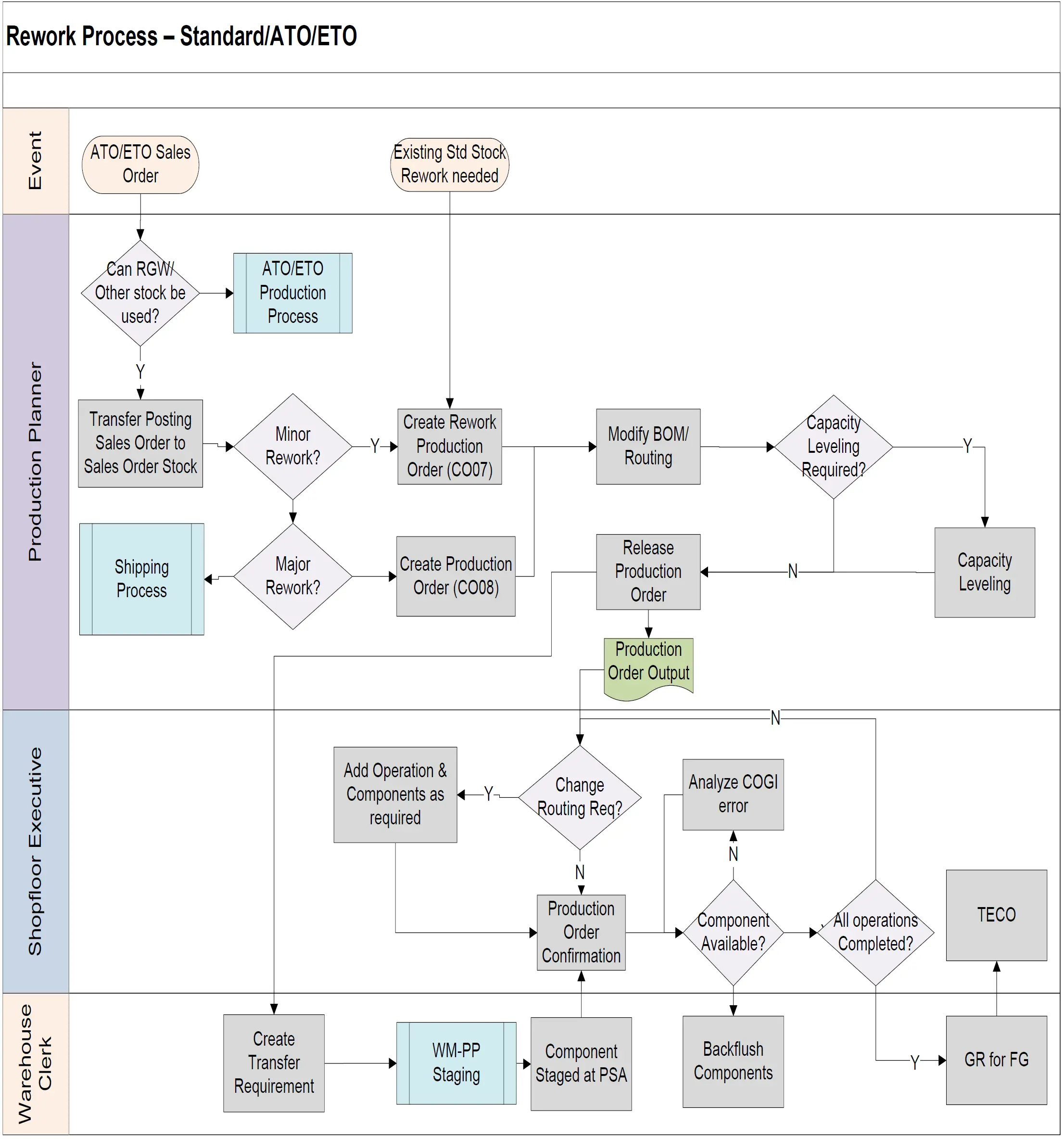The flowchart illustrates the rework process for Standard, Assemble-to-Order (ATO), and Engineer-to-Order (ETO) machines in SAP. This process is triggered by two events:
- An ATO/ETO Sales Order
- Existing Standard Stock needing rework
The process flow is as follows:
- For ATO/ETO Sales Orders:
- The system checks if RGW (Return Goods Warehouse) or other stock can be used.
- If not, it proceeds to the ATO/ETO Production Process.
- If yes, a Transfer Posting from Sales Order to Sales Order Stock is performed.
- The Production Planner then determines if it’s a Minor or Major Rework:
- For Minor Rework, a Rework Production Order (CO07) is created.
- For Major Rework, a regular Production Order (CO08) is created.
- For Minor Rework:
- The BOM (Bill of Materials) and Routing are modified as needed.
- Capacity Leveling is performed if required.
- The Production Order is released.
- For Major Rework:
- The Production Order is created with reference to the sales order.
- Capacity Leveling is performed if required.
- The Production Order is released.
- Production Order Output is generated and sent to the Shop Floor.
- Shop Floor Execution:
- If routing changes are needed, operations and components are added to the order.
- Production Order Confirmation is performed.
- Components are checked for availability.
- If components are not available, they are backflushed (automatically issued).
- COGI (Confirmation of Goods Issue) errors are analyzed and corrected.
- All operations are completed.
- Warehouse Management:
- Transfer Requirements are created.
- WM-PP (Warehouse Management – Production Planning) Staging is performed.
- Components are staged at the Production Supply Area (PSA).
- Order Completion:
- Once all operations are completed, Goods Receipt (GR) for Finished Goods (FG) is performed.
- The order is set to TECO (Technically Completed) status.
This process allows for efficient handling of rework scenarios, whether they originate from sales orders or existing stock, ensuring that machines are properly refurbished or modified to meet customer requirements or quality standards.
